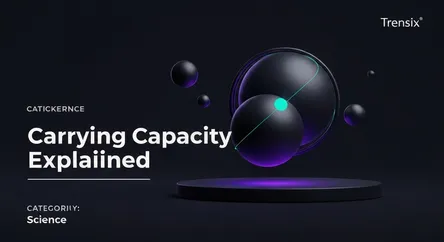Science
Carrying Capacity Explained

Discover carrying capacity, the maximum population an environment can sustain. Learn why it's a key concept in ecology and for human sustainability.
What is it?
Carrying capacity, often denoted as 'K', is an ecological concept representing the maximum population size of a species that an environment can sustain indefinitely. This limit is determined by available resources like food, water, and space. When a population is small, it can grow exponentially. However, as it approaches the carrying capacity, its growth rate slows due to increased competition and limited resources, eventually leveling off. This creates a logistic, or S-shaped, growth curve, a core principle in studying population dynamics.
Why is it trending?
The term is trending due to rising global concerns about human population growth, climate change, and resource depletion. As the world population surpasses 8 billion, questions about Earth's ability to support us become more urgent. Carrying capacity provides a scientific framework for discussing sustainability, overconsumption, and our environmental impact. It's a key element in conversations about sustainable development goals, biodiversity loss, and the future of our planet.
How does it affect people?
Exceeding an environment's carrying capacity has direct consequences, potentially leading to food and water shortages, pollution, and social instability. It forces societies to confront planetary limitations and evaluate consumption patterns. Understanding this concept is vital for effective urban planning, agriculture, and conservation. It pushes policymakers and individuals to seek innovative solutions, from renewable energy to sustainable farming, to ensure a stable future for all within Earth's ecological limits.